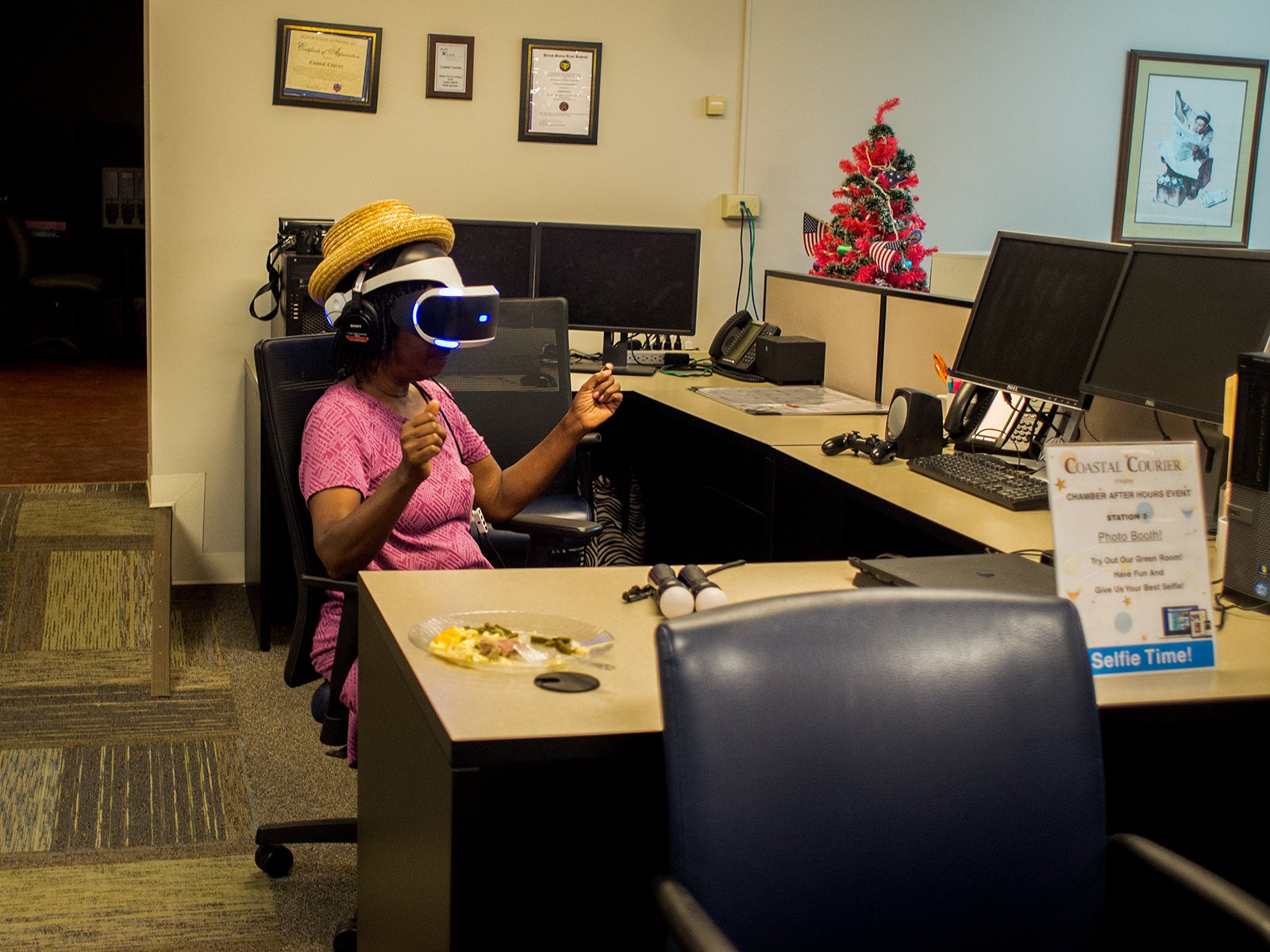Sign up for The Media Today, CJR’s daily newsletter.
The Coastal Courier, a Georgia-based community newspaper, has an office on Main Street and serves up a print edition twice a week. Coverage ranges from the civic (“Upcoming blood drives this month”) to the sordid (“Man charged with human trafficking”). Online, its website offers a collage of banner ads and invitations to subscribe. It also has its own virtual reality channel, hosted on YouTube.
The Courier started its VR experiment in 2017, says staff videographer Lawrence Dorsey, who paid for the equipment himself. So far there seems to be a little bit of community interest, though Dorsey notes that his content attracts more viewers in countries such as Great Britain, Germany, and France than in Georgia. And if he were to leave the Courier, it’s unlikely the experiment would continue. “It’s just me,” says Dorsey.
The Courier is an outlier when it comes to tech adoption in US local news. Most smaller media chains and independent publishers lack the capacity to push into VR, AR, wearables, and chat apps (and it’s unclear yet whether audiences will embrace them for local news). Bigger companies may have the resources but lack the incentive to prioritize digital user experience, whether due to corporate strategy, attention on the legacy product, or a business model that emphasizes advertising at scale. In short, the local news story is one of adaptation to widely used digital tools, rather than innovation with new ones.
That adaptation is still a work in progress for a wide range of local outlets, including newspapers, broadcasters and digitally native publishers, as new research from the Tow Center shows. The study of more than 2,000 American local news outlets, many of them small and spread across both dense and sparsely populated regions, found that about one in 10 don’t even have a website. And that number increases if you count those that are barely online; some publishers offer only a PDF file of the previous week’s print edition. The majority that do have a website are slowed down by web architecture that causes their pages to load excruciatingly slowly.
Other digital engagement and business products that have occupied the attention of national newsrooms for years are absent from strikingly large portions of the local media landscape. About half (47 percent) of all local news websites offer video content, including almost all of those operated by TV stations, but only about a third of smaller community papers. A slim majority operate comment sections on their stories. And while most daily newspapers offer a way for readers to subscribe online, one in three community weeklies do not.
On the other hand, most local news websites studied offer a mobile-responsive web design, critical for a news audience increasingly reliant on smartphones. And while some still supply their own mobile app (local TV stations in particular), most seem to recognize that app development and its maintenance are not worth the effort.
READ: Interrogating the role elected officials play in mass incarceration
According to one observer, Debora Wenger, a professor at the University of Mississippi and co-author of a recent Knight Foundation report on the future of local TV, the will to improve digital offerings is there. “These folks are passionate about figuring this out, beyond the business imperative,” Wenger says. But for the most part, the local TV news business struggles to find an audience in today’s digital environment.
The same could be said for other local media, not just TV: The reality is that the local news business is playing a game of catch-up. “It was [the] Wild West not that long ago,” says Rob Gates, senior business intelligence analyst at Gannett. “Newsrooms probably erred a bit early on,” he says, with their singular focus on the page view metric, which gave rise to industry sins like pagination and marathon slideshows.
Damon Kiesow, former director of product for McClatchy and currently Knight chair at University of Missouri School of Journalism, likens local journalism’s problem with tech to a kind of “bigotry of low expectations,” though he acknowledges that larger companies have advantages that smaller, nimbler ones do not. Companies that own many local media properties, for instance, have more bargaining power with big tech companies than their solo competitors, and can get a seat at the table with the Apples and Googles of the world.
But centralizing tech in a media conglomerate’s corporate headquarters comes at a cost. According to Kiesow, it isolates the responsibility and involvement in strategy of technology choices away from local stakeholders to create a “learned sense of helplessness” among local publishers and editors, who might well hear about weaknesses or problems with their newspaper’s web design, but can’t do much to fix them.
So what is a local news outlet without the budget or personnel to do complex technical development to do?
ICYMI: Drone journalism’s battle for airspace
Bryan Boyer, vice president of product and people at Spirited Media which operates publishers such as BillyPenn and The Incline, cautions that many digital publishers made the mistake of burning through capital in the process of building fancy digital products in the past 10 years. Digital publishing is different now, he argues, making the case for a simple web page, a subscriber box, and an email newsletter. Then, he says, “start publishing some shit on the internet.”
And eventually as the cost lowers and audience interest reaches critical mass for technology like VR, maybe more local publishers will look like the Courier.
Has America ever needed a media defender more than now? Help us by joining CJR today.



